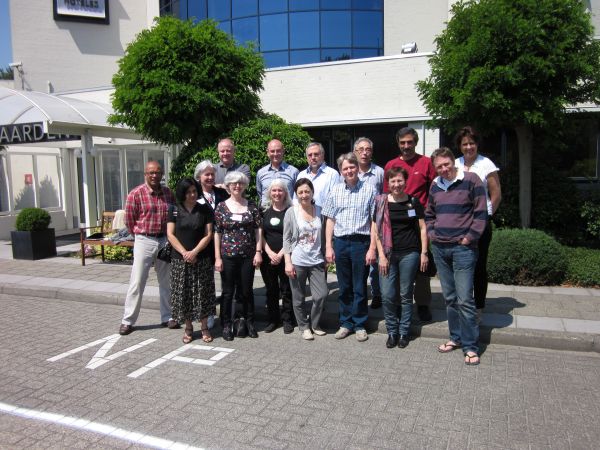Stem/Precursor cells
- Number 185
- Date 8 June 2011
Location: Naarden
The 185th ENMC workshop on stem/precursor cells as a therapeutic strategy for muscular dystrophies was held at Naarden, The Netherlands, on 3-5 June 2011. Fifteen participants from six countries (United Kingdom, The Netherlands, France, Germany, Italy, Spain and Singapore) with expertise in satellite cells, muscle stem cells, muscle development, muscular dystrophies, clinical trials and patients’ perspectives, attended.
The aims of the workshop were to discuss progress towards the use of stem cells to treat muscular dystrophies and define work that needs to be done, to address the following issues:
The workshop provided an invaluable opportunity to bring together many parties all working on the same problem but with different tools. It provided a platform for participants to report new, often unpublished findings, to highlight problems and how they have been overcome and to share expertise in reagents and animal models. The main achievements included a decision to put standard protocols for the preparation and identification of different stem cell types and methods for their preclinical testing onto a website, to ensure that different groups achieve comparable results.
We also discussed problems related to the fact that muscle stem cells from different muscles or patients, that appear to be the same, are not always identical and that they may change their properties as they are expanded in culture ready for transplantation.
It is not possible to do a clinical trial using stem cells that is placebo-controlled; design of the trial and methods to measure efficacy of stem cell transplantation should be carefully planned. The outcome of two ongoing stem cell trials - one with systemically-delivered and one with locally-delivered cells – will be known next year. A significant development made at the meeting was made after hearing from DMD patients that maintenance or restoration of function of a few small muscles, e.g. in the hand, would represent a significant improvement in the quality of life. To this end, the group discussed possibility of extending current work to develop a trial in which small muscles in the finger could be transplanted with myoblasts. It is however very important to manage the expectations of patients and families and to ensure that good quality, easily-accessible information on stem cell treatment for Duchenne muscular dystrophy is available on the internet. We plan to hold further meetings of this consortium to advance the possibility of stem cells to treat muscular dystrophies.
A full report is published in Neuromuscular Disorders (pdf).

ENMC
Lt. generaal van Heutszlaan 6
3743 JN BAARN
The Netherlands
+ 31- 35-5480481
enmc@enmc.org
